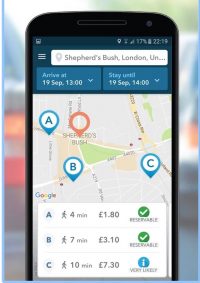What are the major barriers to UK smart cities?
What are the major barriers to UK smart cities?

A recent report commissioned by streetlight design and manufacturing company Lucy Zodion has found significant barriers to smart city development in the UK.
The report contains research into the opinions on smart cities of senior contacts from councils across England, Wales, Scotland and Northern Ireland. The in-depth interviews conducted in May and June 2016 gauged the appetite for smart cities among UK councils and opinions on a range of topics, from the biggest obstacles to smart cities to the most pressing priorities for councils.
It was revealed that the task of achieving smarter, more connected cities in the UK lies with local councils. With the National government’s drive for devolution, they are placing the responsibility on the individual council to take the initiative when it comes to improving their city.
Yet growing strains on public services and budgets could negatively affect the ability of all councils to dedicate the resources required to trial technology, progress smart projects, and identify the most cost-effective path to prepare our cities for the future.
The research identified strong evidence for a lack of understanding within councils from the outset; over 80% of the 187 councils did not have an appointed lead for smart cities, and many confessed to a low awareness of the topic and what it could mean for them. Common barriers towards progression were identified, from securing funding and resourcing at a time of budget cuts, to a lack of collaboration between services and departments hindering progress.
Despite the acknowledgement that smarter solutions have the potential to save money or streamline services, many councils less involved in smart cities struggle to siphon budget away from core spending (largely health and social care) and dedicate resources to progress smart cities projects and invest in new initiatives.

Notably, those councils leading the way on smart cities were more likely to have secured external funding – and those who were more advanced along their smart journey and keen to progress further admitted to having bid for funding but lost, or needing more funding to meet their strategic aims.
“We aren’t hindered by funding, we are finding it from Europe, the funding available by UK government in terms of super-fast broadband, and finding our own resources from government too.”
This is significant as the outcome of the recent Brexit referendum may make UK councils ineligible to receive EU funding.
UK projects need councils’ buy-in
Without sustainable funding in place, smart city projects are failing to achieve internal buy-in, according to many councils. Research participants were asked how high a priority smart cities were on their council’s agenda. The overwhelming response was that, faced with budget pressures and shrinking resources, finding internal buy-in to progress with smart initiatives was an uphill struggle for many.
The downgrading of a smart transition as a priority for many local councils was often pinpointed to a lack of evidence to support a business case, particularly when funds are limiting and projects are competing to secure what little there may be available. Whilst some councils are enjoying the benefits of early implementation of new technology, the vast majority have struggled to obtain results and proof that would convince council leaders to divert funds to support new initiatives.
“A lot of the services that are provided in cities are privatised. The councils won’t benefit from the information that is derived from how people are using infrastructure, how they’re using leisure resources, how they’re using transport and so on. The council can’t actually do much with that apart from planning how the roads would work, how you know when development happens, most people who are going to benefit are the ones actually making money rather than spending it in cities and towns, and that would be businesses.”
The ability to apply Wi-Fi connections to street lamps in city centers was the most cited example of a smart solution already rolled out in cities. This was seen as immediately offering benefits to citizens in a cost-effective way. Situated every 30 yards on roads and streets in every city, lampposts are publicly owned, connected to an electricity supply and, by their very nature, located in urban areas. Their height makes them suited to radio communications, and smart technology is already being developed for lamp posts, from air pollution sensors and parking meters to improving security and energy efficiency with smarter street lighting.
Without meaningful financial investment and local commitment is it unlikely that many local councils will extend their smart city development beyond them.
The post What are the major barriers to UK smart cities? appeared first on ReadWrite.
(22)













